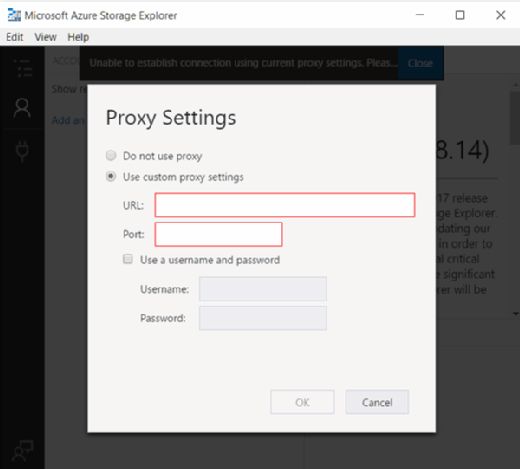
If you want a list of blob containers in an account, you send a request to the appropriate service endpoint.Īzure roles can grant you permissions for management or data layer access. For example, if you want to get a list of your storage accounts from Azure, you send a request to the management endpoint. Containers, blobs, and other data resources are accessed through the data layer. Subscriptions and storage accounts are accessed through the management layer. Why do I need a management layer role to see my resources in Storage Explorer?Īzure Storage has two layers of access: management and data.
#MS AZURE STORAGE EXPLORER DOWNLOAD DOWNLOAD#
For example, if you want to list or download blobs, you need, at the least, the Storage Blob Data Reader role. You must be assigned at least one role that grants access to read data from resources.


If you need to revoke access keys, you can regenerate them from the Azure portal. As a result, we don't recommend that you hand out these keys to account users. You can get access to account keys through more powerful roles, such as the Contributor role.Īccess keys grant unrestricted permissions to anyone who holds them. Storage Explorer can also use account keys to authenticate requests. To get this permission, you must be assigned the Reader role. You must have permission to list storage accounts. "Read: List/Get Storage Account(s)" permissions issue Contact your Azure account admin if you're not sure you have the appropriate roles or permissions. The following sections describe the permissions Storage Explorer currently requires for access to your storage resources. If you're having problems accessing storage resources through Azure RBAC, you might not have been assigned the appropriate roles. How do I access my resources in Storage Explorer? Here are some strategies to get Azure RBAC working optimally in Storage Explorer. Azure RBAC permissions issuesĪzure role-based access control (Azure RBAC) enables highly granular access management of Azure resources by combining sets of permissions into roles. This guide summarizes solutions for issues that are commonly seen in Storage Explorer. The app can connect to storage accounts hosted on Azure, national clouds, and Azure Stack.

Microsoft Azure Storage Explorer is a standalone app that makes it easy to work with Azure Storage data on Windows, macOS, and Linux.


 0 kommentar(er)
0 kommentar(er)
